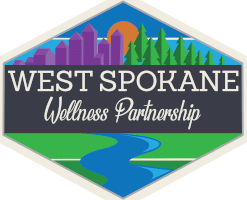Tobacco
What is tobacco?
Tobacco is a plant grown for its leaves, which are dried and fermented before being put in tobacco products. Tobacco contains nicotine, an ingredient that can lead to addiction, which is why so many people who use tobacco find it difficult to quit. There are also many other potentially harmful chemicals found in tobacco or created by burning it.
How do people use tobacco?
People can smoke, chew, or sniff tobacco. Smoked tobacco products include cigarettes, cigars, bidis, and kreteks. Some people also smoke loose tobacco in a pipe or hookah (water pipe). Chewed tobacco products include chewing tobacco, snuff, dip, and snus; snuff can also be sniffed.
How does tobacco affect the brain?
The nicotine in any tobacco product readily absorbs into the blood when a person uses it. Upon entering the blood, nicotine immediately stimulates the adrenal glands to release the hormone epinephrine (adrenaline). Epinephrine stimulates the central nervous system and increases blood pressure, breathing, and heart rate. As with drugs such as cocaine and heroin, nicotine activates the brain’s reward circuits and also increases levels of the chemical messenger dopamine, which reinforces rewarding behaviors. Studies suggest that other chemicals in tobacco smoke, such as acetaldehyde, may enhance nicotine’s effects on the brain.
What are other health effects of tobacco use?
Although nicotine is addictive, most of the severe health effects of tobacco use comes from other chemicals. Tobacco smoking can lead to lung cancer, chronic bronchitis, and emphysema. It increases the risk of heart disease, which can lead to stroke or heart attack. Smoking has also been linked to other cancers, leukemia, cataracts, Type 2 Diabetes, and pneumonia. All of these risks apply to use of any smoked product, including hookah tobacco. Smokeless tobacco increases the risk of cancer, especially mouth cancers.
Electronic Cigarettes
Electronic cigarettes, also known as e-cigarettes or e-vaporizers, are battery-operated devices that deliver nicotine with flavorings and other chemicals to the lungs in vapor instead of smoke. E-cigarette companies often advertise them as safer than traditional cigarettes because they don’t burn tobacco. But researchers actually know little about the health risks of using these devices. Read more about e-cigarettes in our Electronic Cigarettes (e-Cigarettes) DrugFacts.
Pregnant women who smoke cigarettes run an increased risk of miscarriage, stillborn or premature infants, or infants with low birth weight. Smoking while pregnant may also be associated with learning and behavioral problems in exposed children.
People who stand or sit near others who smoke are exposed to secondhand smoke, either coming from the burning end of the tobacco product or exhaled by the person who is smoking. Secondhand smoke exposure can also lead to lung cancer and heart disease. It can cause health problems in both adults and children, such as coughing, phlegm, reduced lung function, pneumonia, and bronchitis. Children exposed to secondhand smoke are at an increased risk of ear infections, severe asthma, lung infections, and death from sudden infant death syndrome.
How does tobacco use lead to addiction?
The Surgeon General’s Report on Smoking Cessation, released in January 2020, offers evidence that smoking cessation is beneficial at any age, improves health status and enhances quality of life. It also reduces the risk of premature death and can add as much as a decade to life expectancy.
For many who use tobacco, brain changes brought on by continued nicotine exposure result in addiction. When a person tries to quit, he or she may have withdrawal symptoms, including:
- irritability
- problems paying attention
- trouble sleeping
- increased appetite
- powerful cravings for tobacco
How can people get treatment for nicotine addiction?
Both behavioral treatments and medications can help people quit smoking, but the combination of medication with counseling is more effective than either alone.
The U.S. Department of Health and Human Services has established a national toll-free quitline, 1-800-QUIT-NOW, to serve as an access point for anyone seeking information and help in quitting smoking.
West Spokane Wellness Partnership provides Tobacco education to schools, parents/caregivers, school staff, and community on an ongoing basis. See our events page to learn more!
Learn more about tobacco here:
- https://www.drugabuse.gov/publications/drugfacts/cigarettes-other-tobacco-products
- https://www.fda.gov/tobacco-products/public-health-education/tobacco-education-resources-parents-and-teachers
- https://www.cdc.gov/tobacco/basic_information/for-health-care-providers/education-training/index.html
- https://www.cdc.gov/tobacco/multimedia/index.htm
- https://www.healthychildren.org/English/ages-stages/teen/substance-abuse/Pages/For-Kids-Teens-Tobacco-Education-Resources.aspx
- https://www.tobaccofreekids.org/assets/factsheets/0159.pdf
